RESEARCH
VOCAB
Standard working week: 35-40 HOURS IN WEEK. - organisation determines how many hours per week is considered full-time
Time-based media: physical and temporary dimensions. "Contemporary artworks that include video, film, slide, audio, or computer-based technologies are referred to as time-based media works because they have duration as a dimension and unfold to the viewer over time."
Experiential: experience and the process of experience by individuals and audiences. also can use technology - "exposing audiences to unorthodox experiences. Experiential art is always time-based and is usually in a purpose designed environment.
GILLIAN WEARING

In 'Sixty Minutes Silence' Gillian Wearing's working relationship with the public extends to an apparent group of policemen and women. I like the attention to detail which the viewer feels when viewing. Fristly the obvious school-photoshoot set up is an instant nostalgia to viewers who reminisecent of a group of children, football players etc, waiting sixty minutes for the artist to release them from a collective portrait. At first the image might appear to be frozen however upon view the tweeks become clear and you dont want to stop watching to see who else will move.
"This piece is influenced, Wearing says, "by the principle of time inherent to early photography where the subject had to remain still for a considerable period in order for the image to be held or captured." Yet the slightest movement, scratching of nose, folding of arms, blink, sway, fiddling and adjusting of helmet indicates how the group itself starts to disintegrate, in fact, the individuals go through some form of physical endurance test, experiencing mounting discomfort in real time". --Sasha Craddock, 'Gillian Wearing: 60 Minutes Silence', Spotlight from the Arts Council Collection broadsheet, 1998.
EDWUEARD MUYBRIDGE Galloping Horse 1878
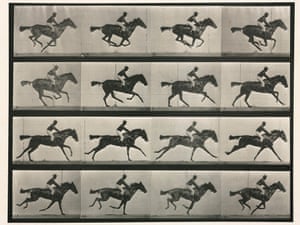
In 1872, the former governor of California Leland Stanford, a race-horse owner, hired Eadweard Muybridge to undertake some photographic studies. Stanford had reputedly taken a bet on whether all four of a racehorse's hooves are off the ground simultaneously. On 15 June 1878, Muybridge set up a line of cameras with tripwires, each of which would trigger a picture for a split second as the horse ran past. The results, as shown in this plate, settled the debate - THE GUARDIAN
Tehching Hsieh One Year Performance 1980-1981 (Time Clock Piece)
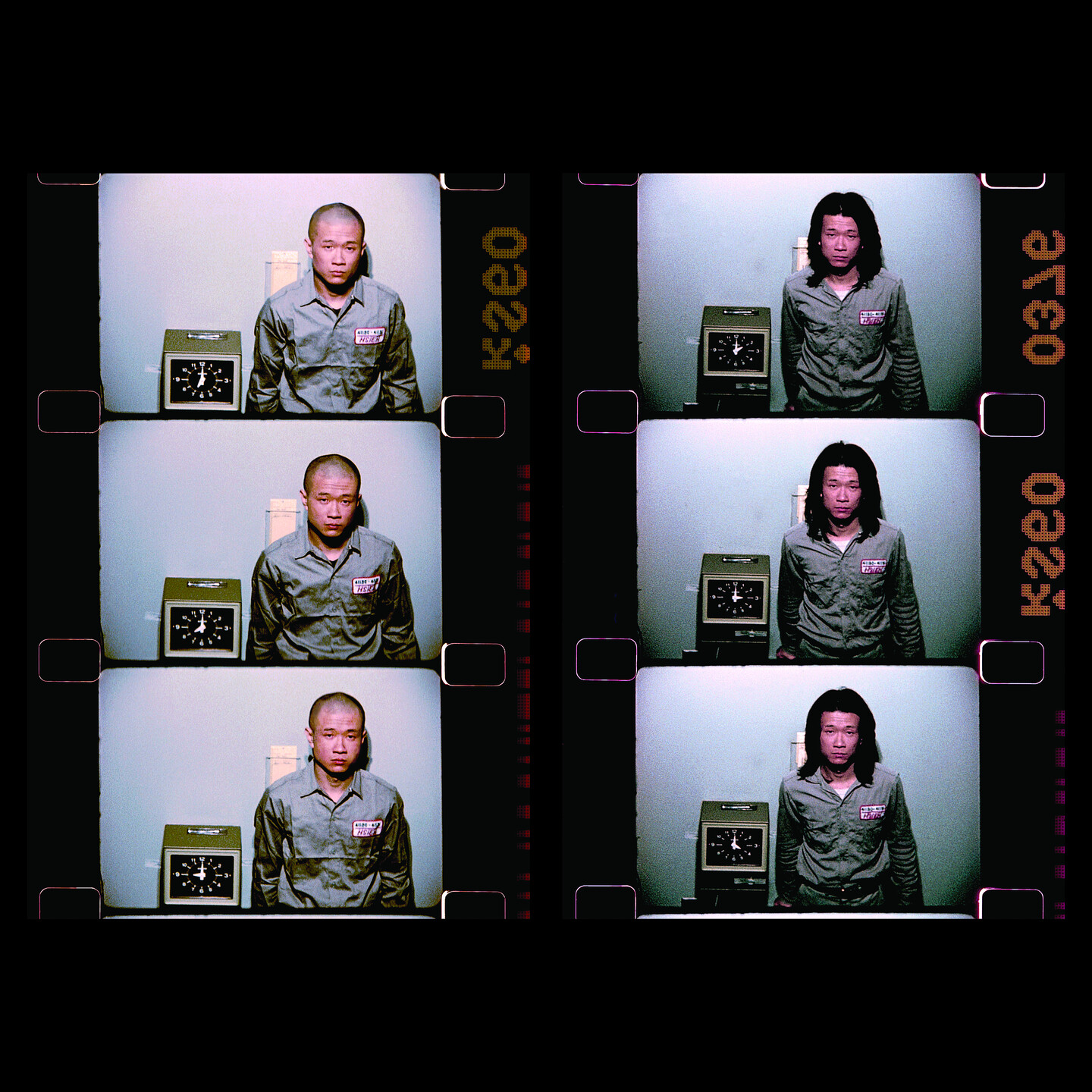

"My work is not about my life story, it is about human communication"- Tehching Hsieh- words in https://vimeo.com/16280427
For one year, from April 11, 1980 through April 11, 1981, Hsieh punched a time clock every hour on the hour. Each time he punched the clock, he took a single picture of himself, which together yield a 6 minute movie. He shaved his head before the piece, so his growing hair reflects the passage of time.
JOHN VERNON LORD
John Vernon Lord / 366 drawings in 2016

"Every day of 2016 I would do a drawing of something that occurred to me on the spur of the moment. The exercise was done for the fun of drawing - the liberation of drawing 'for the sake of it' is always something of a relief compared to the exacting challenge of illustrating professionally."
in 2016 illustrator John Vernon Lord made one drawing a day using ink and a 1inch x 1inch format. 2016 was a leap year, adding one extra drawing to the collection
TIME DEFINITION
the indefinite continued progress of existence and events in the past, present, and future regarded as a whole.
a point of time as measured in hours and minutes past midnight or noon
CHRISTOPH NIEMANN
Christoph Niemann / 26.6 miles, 46 sketches- The illustrator ran the New York marathon and made sketches along the way.The length of the marathon is the amount of time alocated to make the images.
I am intrigued by Niemann's resourcefulness and ambition to complete a marathon while producing sketches and uploading them all together, focus on breathing and getting the right colour pen. I found it interesting how he made his own little set up to make it easier for himself to draw.
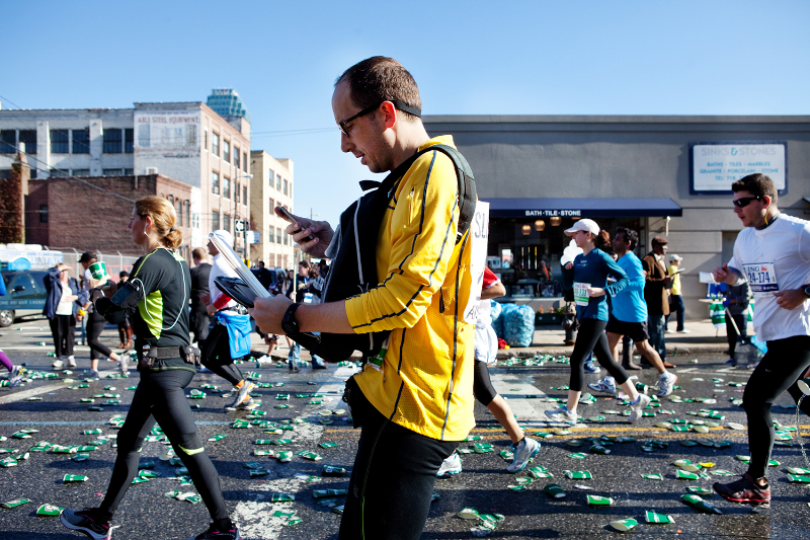
THE below show screenshots of the tweets as he posted updates of his sketches along the way during the race.
Life In A Day (2011) MACDONALD
ED RUSHCHA– Every Building on the Sunset Strip 1966

ONE HOUR CIRCLE PAINTING
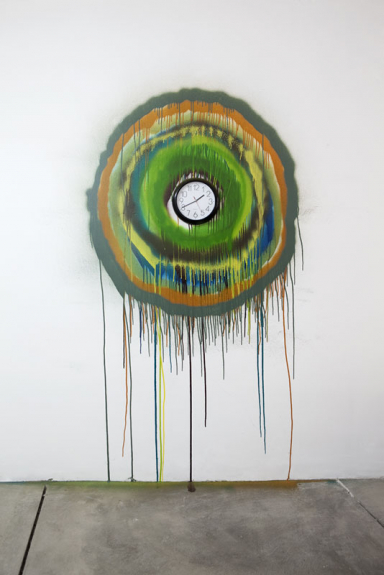
clock, 60 different colours of spray paint
"60 different visitors to the gallery are individually given the following instruction: Select one can of spray paint. Spray one complete circle around the perimeter of the clock in an uninterrupted clockwise circular motion following the ticking second hand of the clock as a metronome/guide. Your circle must take 60 seconds to paint, at 15 seconds the circle should be a quarter complete and at 30 seconds the painting should be half way. Start and end at the 12 o’clock position, do not lift your finger off the spray can nozzle until the circle is complete, don’t worry too much if your line overlaps the previous persons line.
Each circle adds to the growing set of concentric rings. The combined set represents a combined painting duration of exactly one hour.
YAYOI KUSAMA
4- Yayoi Kusama - infinity nets
The act of repeating an action endlessly until the surface area chosen is covered completley.
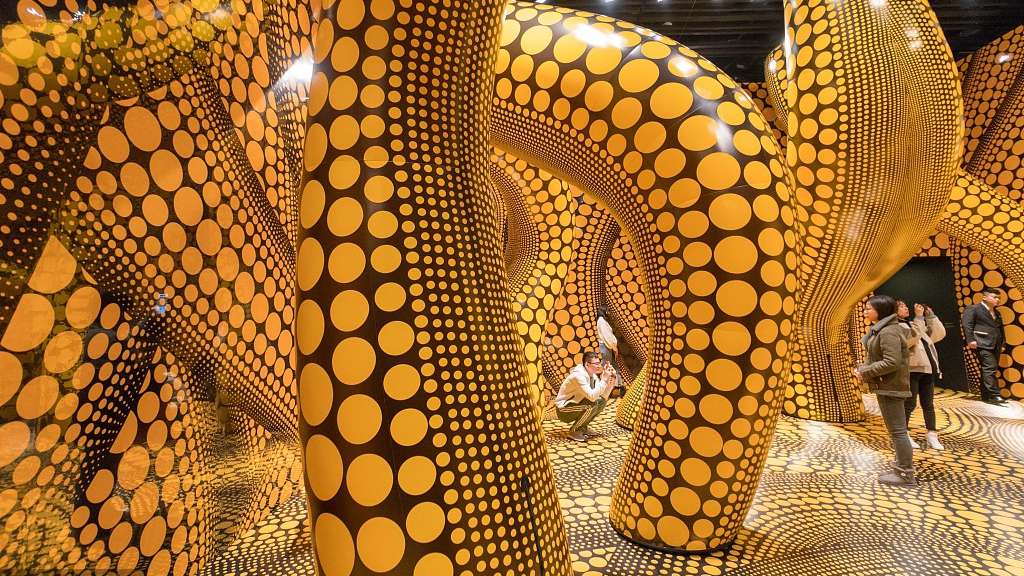
Most of Kusama's oeuvre can be traced back to early hallucinations she first had in her childhood of multiplying dots and nets which gradually spread to dominate her universe. These visions developed into obsessive neuroses which fuelled her paintings, sculptures and performances (during which she invariably covered her naked models with painted polka dots). For Kusama, polka dots had the form of the Sun, "signifying masculine energy, the source of life" while also echoing "the form of the moon, symbolising the feminine principle of reproduction and growth".
